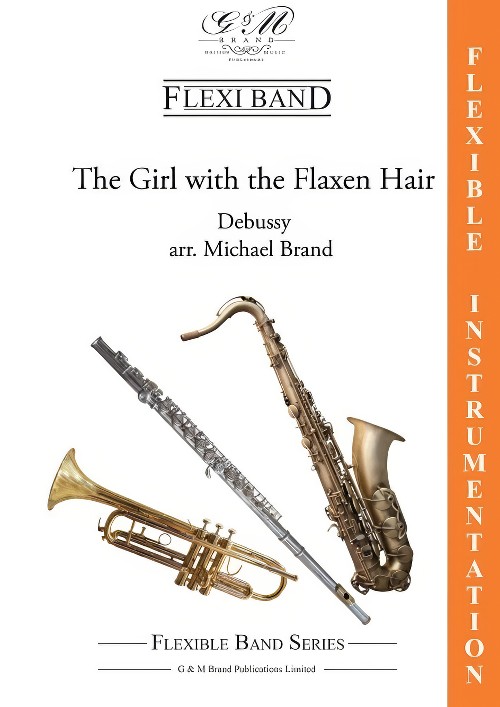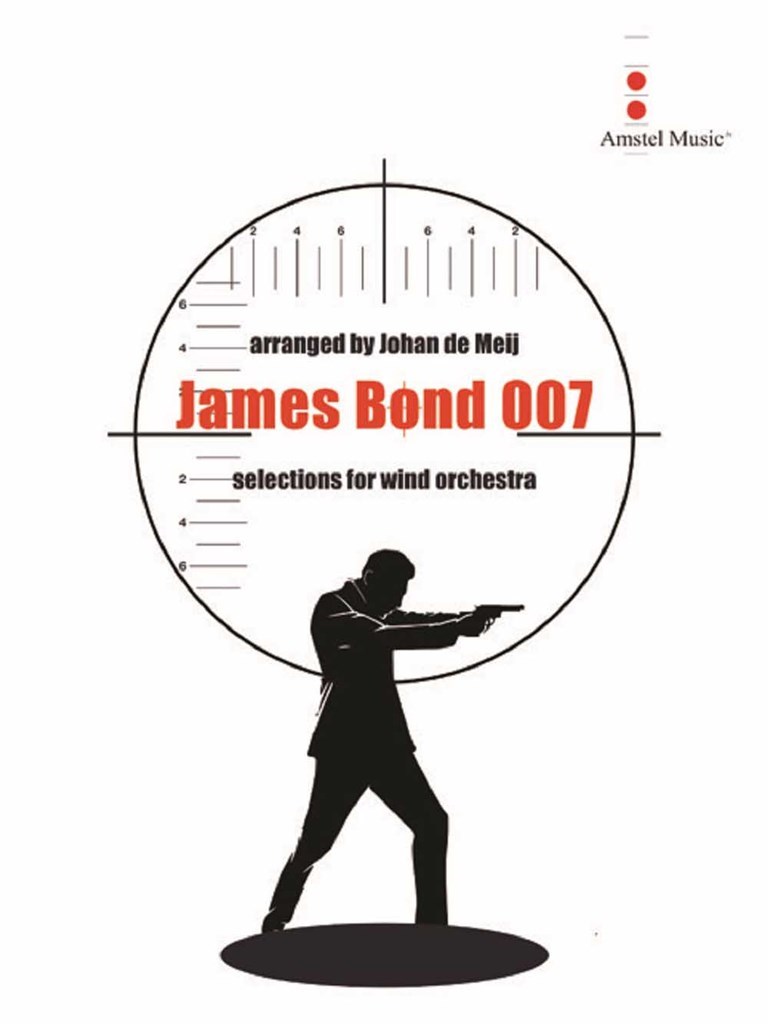Results
-
£76.99
Club Paradiso - Sven Van Calster
Club Paradiso is a work by Sven Van Calster, written in his well-known, approachable style. He composed this work in the hotel of the same name during a holiday in Alanya, Turkey. He paid special attention to an even distribution of the most enjoyable passages amongst all the parts of the orchestra, and also took care of the necessary duplications so that most orchestras are able to play the piece.
Estimated dispatch 7-14 working days
-
 £174.10
£174.10Street Life - Sample
Randy Crawford led R&B veterans the Crusaders on the transatlantic hit "Street Life" (1979). A specially re-recorded version was featured in the soundtrack for the films Sharky's Machine and Jackie Brown. The composer Joseph Leslie "Joe" Sample (February 1, 1939 September 12, 2014) was an American pianist, keyboard player, and composer. He was one of the founding members of the Crusaders. but he enjoyed also a successful solo career and guested on many recordings including Miles Davis, George Benson, Jimmy Witherspoon, B. B. King, Eric Clapton, Steely Dan, Joni Mitchell, and the Supremes. Sample incorporated jazz, gospel, blues, Latin, and classical forms into his music. This arrangement can be used with a singer, but then need some attention to balance and please take away most melody lines. Electric Bass, Piano and Guitar are optional. If you would like to add an improvisation, please repeat bar 54 -62 without melody as many times you want. (Look at the piano part for chords).
Estimated dispatch 7-14 working days
-
 £104.50
£104.50Dream Of Abraham - Daniel Bukvich
The dream... always... whenever I sleep... the dream...shouts become whispers... Those are the words of Abraham Zapruder as he speaks of his own reaction to the film he made of the assassination of John F. Kennedy. This work incorporates the unique and creative writing style found in the Bukvich Symphony No. 1 in bringing us this chilling and haunting representation. A most remarkable work. (13 minutes 20 seconds)
Estimated dispatch 7-14 working days
-
 £82.50
£82.50Tiger: The Shadow Hunter - Randall D. Standridge
Commissioned by the Maynard Music Association for the Fowler School Band (Massachusetts), Kevin Zozik, conductor. Tigers are among the most majestic and fearsome creatures in the world - beautiful, graceful, deadly. This tribute to these wonders of nature incorporates Asian musical influences from the various locales where tigers are found. The mysterious opening hints at the hidden presence of the tiger as he stalks his prey; then the music abruptly takes off as he suddenly springs to the attack and the chase begins. The cat-and-mouse chase continues until the definitive and inevitable finish.
Estimated dispatch 7-14 working days
-
£76.99
Goodnight Saigon - Billy Joel
Billy Joel began piano lessons when he was only 4 years old. At the age of 13 he discovered rock n roll and went on to produce countless hits in both rock and gentler styles. With this arrangement by Larry Foster De Haske has added on of Joel's most beautiful ballads to the concert band repertoire.
Estimated dispatch 7-14 working days
-
 £84.99
£84.99Os Justi - Anton Bruckner
Anton Bruckner is probably best known today as a symphonist however he was also a significant composer of religious works, motets and masses, and the composer of the great Te Deum. These choral works portray equally as much of Anton Bruckner's power as his symphonies. With his unique gift for unlocking the secret and beauty of choir singing he was a true master in this genre. This arrangement for concert band by Thomas Doss retains the character and homogeneity of the original choral work and is a stunning addition to the concert band repertoire.
Estimated dispatch 7-14 working days
-
£113.30
Rumanian Folk Dances - Béla Bartók
Bla Bartk (1888 - 1945) showed from the beginning of his career an interest in popular music. He began studying music at the age of five and eventually focused on composition and piano. He collected a lot of popular songs, especially during his studies in Hungary, but also music from Romania and Slovakia. This had a lot of influence on his style. In his compositions, Bartk uses many Hungarian popular themes and rhythms, and even his own original works always refer to the same rhythmic and melodic folk character. At the beginning of the twentieth century, Bartk detached himself from romanticism and began to delineate his style on harmonic procedures based on diminished and augmented intervals, on bitonality, and on marked percussiveness, characteristics that are at the core of popular music.The Romanian Dances are a collection of seven folk dances, originally composed for piano (1915, the first six) and then transcribed for a small symphonic orchestra (1917). Of purely modal language, like almost all Bartk's music, each dance comes from a different area of Romania (Stick Dance, Sash Dance, In One Spot, Horn Dance, Romanian Polka, Fast Dance of Belnyes, and Fast Dance of Nygra).
Estimated dispatch 7-14 working days
-
£332.99
Tales & Legends - Etienne Crausaz
This three-movement work by the Swiss composer Etienne Crausaz reflects three true stories and fascinating legends from the Middle Ages. The first movement tells the dramatic story of the 'witch' Catherine 'Catillon' Repond (1662-1731). She was the last woman ever to be executed for sorcery. In the second movement, the famous court jester Girard Chalamala occupies centre stage. This jester, the last one at the castle of Count Greyerz, could make everyone laugh. The third movement tells the story of Count Michael. He went down in history as a spendthrift bon-vivant. His burden of debt became so high that he did a moonlight flit and never came back!
Estimated dispatch 7-14 working days
-
 £45.00
£45.00The Girl with the Flaxen Hair (Flexible Ensemble - Score and Parts) - Debussy, Claude - Brand, Michael
'La fille aux cheveux de lin' is the original French title of this piano prelude by Debussy. He wrote it in 1910 as one of a set of twelve. Michael Brand's arrangement for Concert Band is firmly established in the repertoire but now he has brought his orchestration skills to the Flexible format which allows many more ensembles to enjoy the subtlety of Debussy's most well-known miniature. Duration: 2.30
Estimated dispatch 7-14 working days
-
 £109.99
£109.99James Bond 007 (Concert Band - Score and Parts) - De Meij, Johan
In this selection of well-known James Bond melodies, arranger Johan de Meij has availed himself of the following themes successively: All Time High (from Octopussy, Roger Moore's last role as secret agent 007), James Bond Theme (from the film Dr. No), For Your Eyes Only and Goldfinger (from the same movie, starring Sean Connery). The most important musical contributor to the James Bond movies has been composer John Barry (1933 - 2011). Apart from the above-mentioned themes of Goldfinger and Octopussy, he has also added to his name the themes of Thunderball, From Russia with Love, Moonraker and Diamonds are Forever. He also wrote the music for other famous films such as The Deep, Midnight Cowboy, Born Free and Out of Africa.Duration: 7.30
Estimated dispatch 7-14 working days
